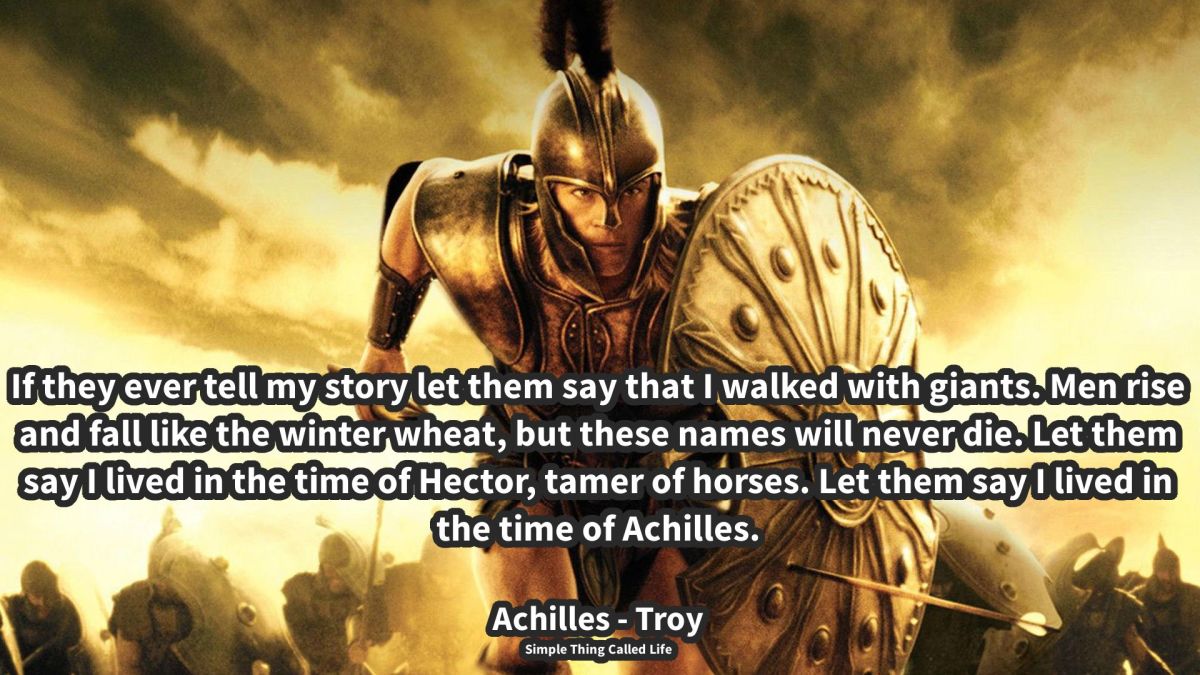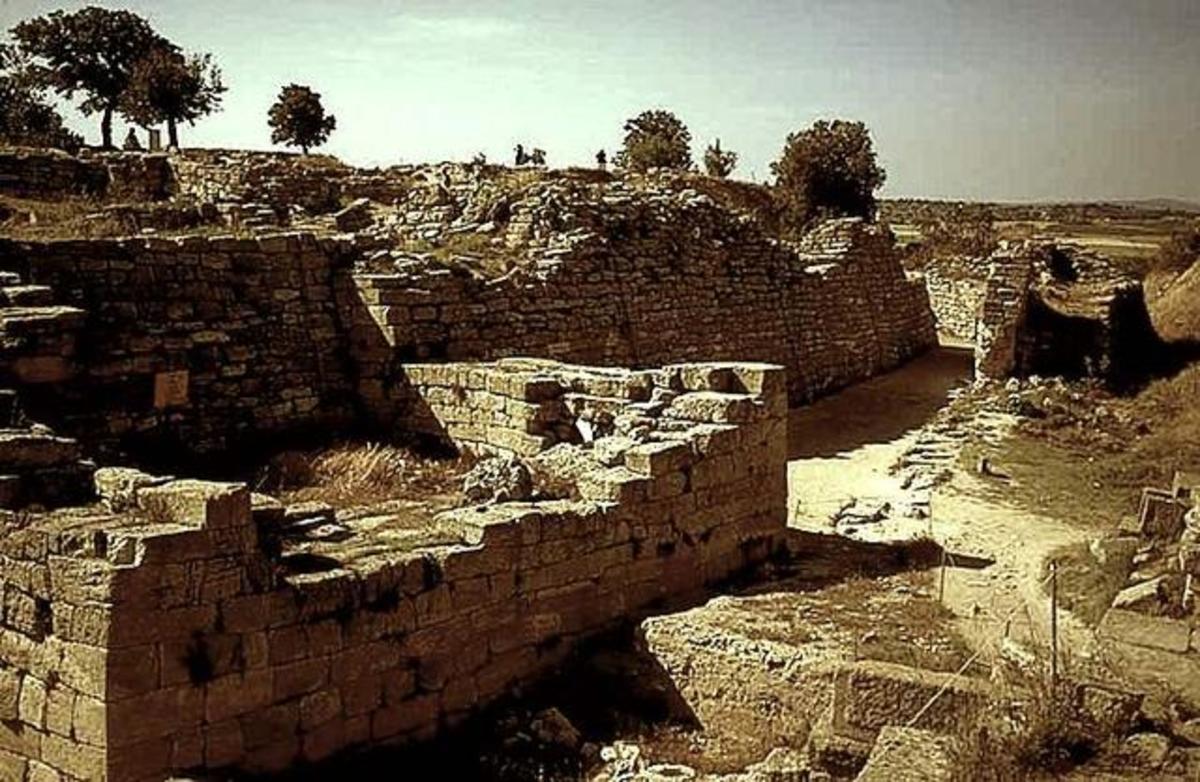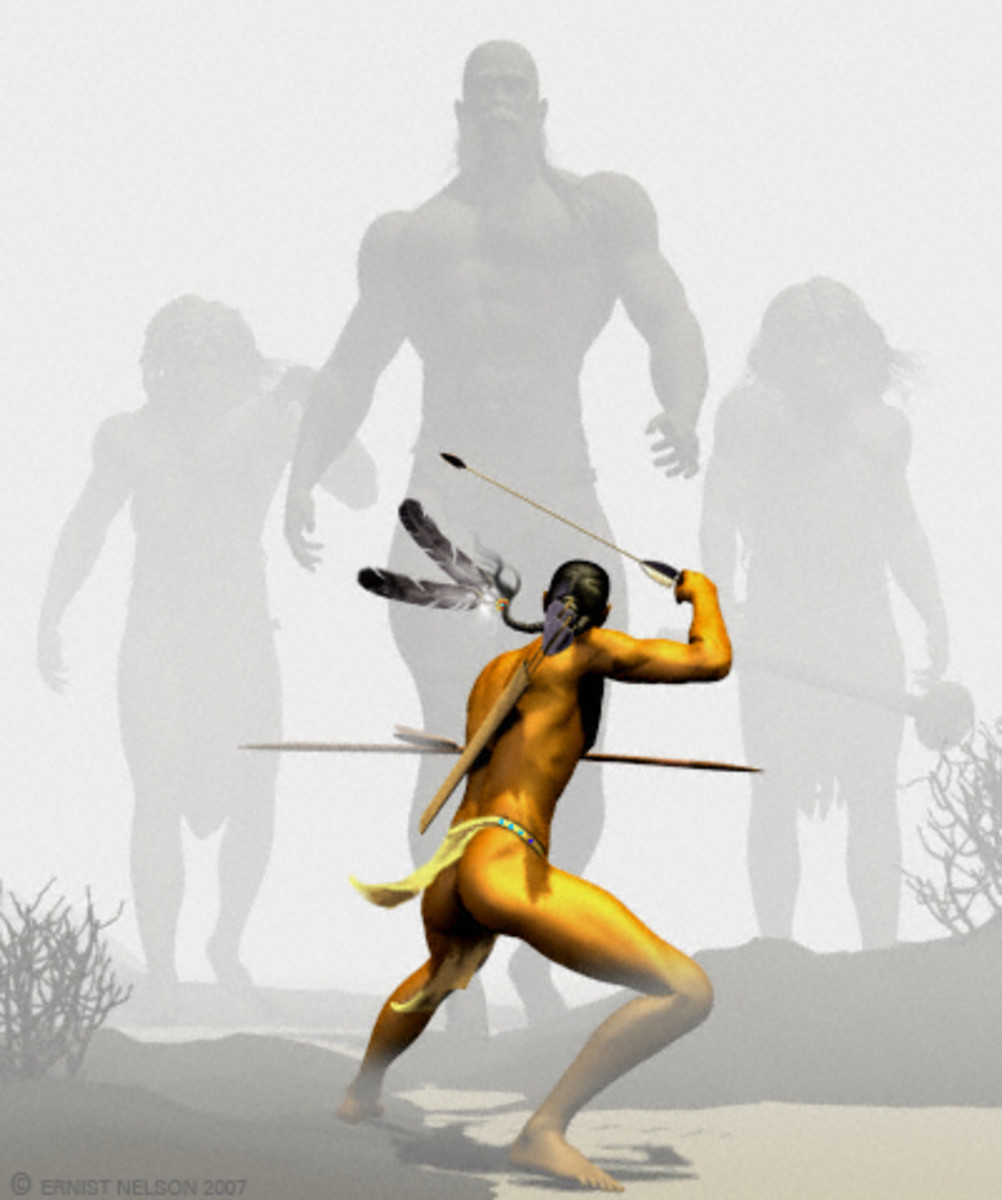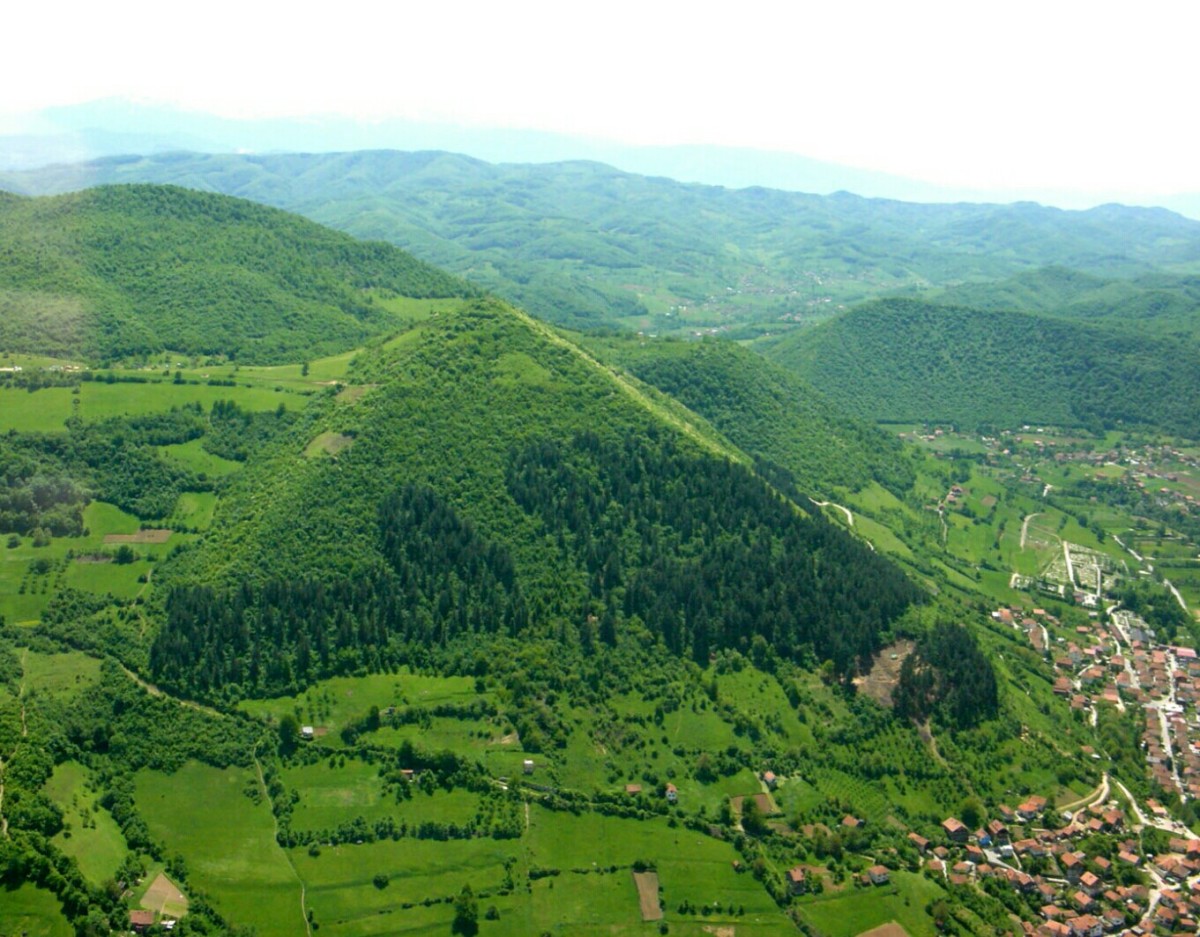- HubPages»
- Education and Science»
- History & Archaeology»
- Archaeology
Miithraisim
Introduction
There have been many religions in Roman Britain, from the Celtic religion to Christianity, but I intend on looking at the mystery cult, Mithraism, a religion from Persia – which is now modern Iran – that worshipped the sun god Mithras and was brought to Britain by the Romans. A mystery cult was a ‘secret rite or doctrine’ and was only discussed by those who were inducted. Its origins are believed by some scholars to go back as far as 1400 BC, but it is most widely accepted that the religion began to grown outside Persia in the time of Emperor Nero, when the Romans discovered the religion in 54 AD. I intend to investigate the worship of Mithras by looking at the archaeological evidence from the Mithraic sites found at Hadrian’s Wall, London and Caernarfon.
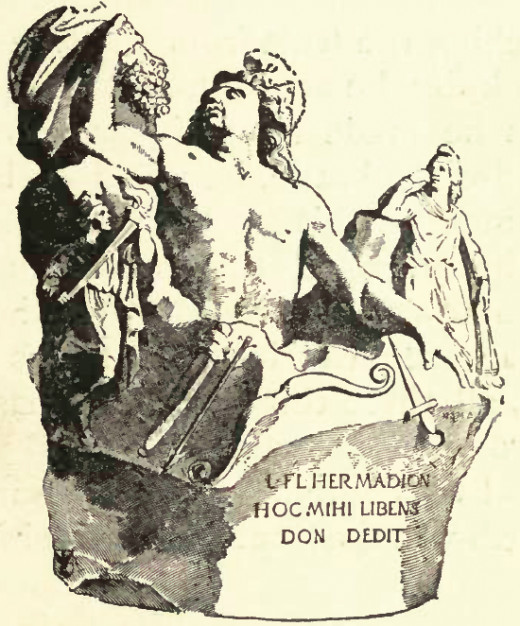
Mithras
Archaeological evidence all over Britain points to the existence of Mithraism and gives details as to some of its religious practices. Mithras was seen to be a strong and brave warrior who represented victory not only in life but also in death; Mithras was also the god of the sun and fair trade and has often believed to be born from the other Persian religion Zoroastrianism, which worshipped Mazda as their god. Like Zoroastrianism, Mithraism appealed to intellects who wanted to know more about the cosmos and became particularly popular in the second and third century AD.
All Mithraic temples discovered in Britain were built underground to represent the birth cave of Mithras; candles were their only source of light as natural light was little to none. The temples would have been made of stone and wood and in a rectangular shape. Excavations have shown that the worshippers would eat while reclining on benches and would participate in a sacred meal that would give them a more virtuous afterlife.
After 391 AD, Mithraism went into decline when all pagan rites were banned by Theodosius because Christians began to object that Mithras was blasphemous to Jesus Christ as they had so many similarities, for example, they were both born on the 25th of December. The temple is Walbrook was even attacked by Christians, who were retaliating against their previous years of persecution. The main difference between the two religions is that Christianity was open to everyone, but Mithraism was probably only open to male soldiers and merchants. The evidence we have for this is that it was a secret society, which women were automatically excluded, also as many of the temples were found on at military forts such as Hadrian’s Wall, it proves that it was meant mainly for fighting men, which is another reason Christians disapproved of Mithraism; that and the sacrificial ritual of killing a bull.
Vercovicium is the name of the temple at Housesteads at Hadrian’s Wall, in English meaning ‘The Hilly Place’, although this name is disputed because it has also been named Borocovium in Carrawburgh. Unlike its counterparts it was never rebuilt after it was partly destroyed in the armed incursions in the third century. It is situated in the eastern end of Knag Burn and Bradley and despite not being rebuilt it has been well preserved. The fort has been calculated to measure about 4 and a quarter acres and is as long as 174 x 101 metres, while the rampart wall is as thick as 20 feet when including the clay bank behind it.
Mithras was not the only god worshipped at Housesteads as several altars were found in honour of Jupiter and Mars as well. Out of the thirty, only three of the altars are dedicated to Mithras.
There are several different myths on how Mithras was born, including coming out of a rock and a tree, however there is also the theory that he was born from a cosmic egg; there is a even a sculpture of this in Vercovicium, where he is surrounded by the twelve zodiacs. This was a significant find by excavators because it is believed to be one of the very first representations of the Zodiac in the Roman Empire. Other findings of the Zodiac are at London with sculptures of Cautes and Cauteopates.
Though most of the dedications were inscribed by commanders, Borocovium’s dedication was carved by a legionary centurion as seen ‘To the God Mithras the invisible sun, Lord of the generation, the beneficiarus consularis, Litorius Pacatianus willingly and deservedly fulfilled a vow for himself and his family’.
Unfortunately, there is little other archaeological evidence in Vercovicium to tell us about the Mithraic religion due to theft in the sixteenth century when much of the statues were stolen.
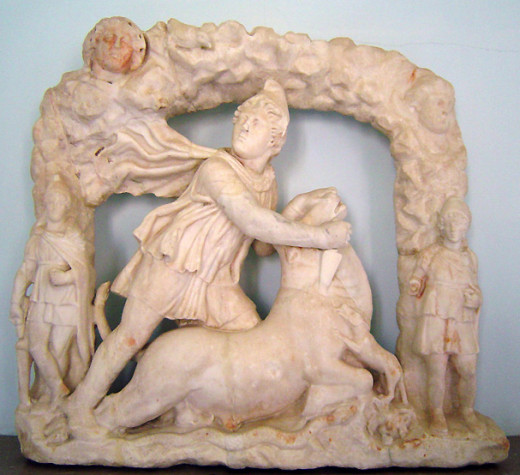
Rudchester
Vindobala is the name of the temple at Rudchester and is the largest Mithraic site at Hadrian’s Wall and the fort occupied there; unfortunately it also contains the most damage. It covers approximately a four and a half acre radius and is about 157 x 117 metres long. Excavation of the site has uncovered that in the late second century, Vindobala was burnt to the ground, but rebuilt swiftly; however, only a century later it was abandoned. By the end of the Roman rule it was once again used around the fifth century.
In 1844, four altars were discovered at the site, including a famous tauroctony presenting Mithras slaying a bull, which is associated with spring. There are several features of this statue, for example, Mithras is not even looking at the beast as he sacrifices it suggesting his prowess; he is depicted as wearing a Phrygian cap which connotes liberty. There are several animals, such as the dog licking the blood of the bull, a snake, symbolising earth and a scorpion – which in contrast to spring is associated with autumn – attacking the bull’s testacies and the bull itself, which was considered an animal of ‘limitless virile power’. It has often been theorised that the statue is a symbol of a cosmos, which would coincide with why those wanting to learn more about the universe were interested in the religion; however, this is only a theory and has not been proven.
Above this tauroctony there is an inscription carved by a Roman centurion saying ‘Lucius Sentius Castus of the Sixth Legion, Piously dedicated this altar to the God Mithras’. Different sources show difference variations on the wording, but the message is the same. Inscriptions like these have been found in several different Mithraeum, usually dedicated by a commander.
Remains dug up at this fort have uncovered several animal bones, including Ox, deer and sheep; while some of these would have been hunted for food, it is also likely that most of the bones found down in the temple were from animals that were sacrificed to Mithras as an offering. Though Mithras was the only God worshipped at this fort, several names are mentioned, including ‘Apollo’ and ‘Sol’, this is because the Romans worshipped Mithras as they were these gods.
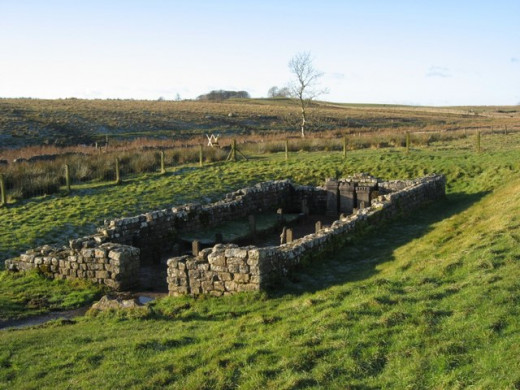
Carrawburgh
Brocolitia is the name of the temple at Carrawburgh, possibly translated in its Roman form as ‘badger holes’, suggesting that the area was once a home to many burrowing creatures. The temple was only originally 26 feet long, but the Romans soon realised that this was not large enough to accommodate everybody, so they extended it and extra ten feet. It is the seventh fort on Hadrian’s Wall from the east; in the fourth century, the fort was desecrated and destroyed most likely by Christians, only leaving rubble, however, like Rudchester is was rebuilt. Excavations of the site began in 1873 by John Clayton, who uncovered a military bath house and many shrines, however it was not until 1949 that the shrine dedicated to Mithras was discovered. Despite the fort being desecrated, the Mithreum itself was found to be well preserved from being rebuilt, with all three altar stones dedicated to the Sun god still standing; one of which is believed to be dated around 213-222AD, which would support the findings that Mithraism became most popular in the third century. There were three dedicated inscriptions, two were by men from a regiment called ‘First Batavian Cohort’, while the other said ‘To the invincible God Mithras, the prefect Marcus Simplicius Simplex willingly and deservedly fulfils his vow’.
Carrawburgh gave archaeologists more details into the initiation rites of Mithraic worshippers. For example (see picture) there was a carving of the seven stages of their hierarchy. The first four were the Corax (raven), Nymphus (bridegroom), Miles (soldier) and Leo (lion) and every member was expected to pass through these levels over time as it was a sign of spiritual advancement and lead to a more fulfilling after life. The next three were Pereses (persian), Heliodromus (runner of the sun) and Pater (father), which were specialist levels with specific roles. Members would wear special robes and masks to inform others of their rank in the hierarchy.
The initiation rites themselves were known to be quite brutal from evidence found by excavators of an ‘ordeal pit’ also known as an taurobolium, which had a metal grating over it, from which bull blood would trickle down. The rituals involved rigorous tests of both the mental and physical to prove that they were worthy of worshipping a god who was able to take down a strong bull. This is one of the reasons why soldiers were keen participants because they would already have had the training and stamina to pass the tests.
As well as the pit, this area also held eating benches, a fire and a small statue (see picture) of the Mother Goddess that has become severely weathered over time.
Like Housesteads, Carrawburgh also has a dedication to the birth of Mithras in the form of an oil lamp stand; however, in this case he is shown to be sprouting from a living rock, wearing a cape a crown that glows like the sun to further emphasise his connection to the sun. It also appears that the stand was embellished as there are remnants of paint still left on it; it is believed that it was plastered and then painted over, making it far more elaborate than other statues in the temple.
London
The Mithraeum at Walbrook was originally found in 1954 and located on the east bank of the Walbrook River, but was consequently moved due to building works being done in that time, resulting with being re-built stone by stone to Victoria Street. It was found underground by excavator W.F Grimes, but when moved was built on the street itself. However, now that the buildings that were being constructed in 1954 have now been taken down, there are current plans to move the Mithraeum back to its original site. It was built there by the Romans for a very practical purpose; because it was near a river it was a good source of fresh water and made it easier to a drainage system to be put in place; it is also the only one of the known Mithraic sites in Roman Britain that was not built on a military base. Unlike the other sites, the London Mithraeum was used mostly by merchants because it was in a civilian area. Not only this, but because it is in a civilian zone, it was the only temple not to get damaged. Where as the other Mithraeum were usually pillaged by the Christians, this one was converted into a church for their own use. It was originally believed that some of the statues of Minerva, Seprapis, Dionysus and Hermes were buried by the cult to protect them from the Christians, but further study indicates that it was the Christians themselves who buried them in order to convert it into a church.
There is evidence that the temple, though originally meant for worshippers of Mithras, the Sun god, there is evidence of it being rededicated to the Roman god of wine, Bacchus in the early fourth century. This is been found likely due to the marble statues found of Bacchus in the temple. However, there were still sculptures in honour of Mithras such as the tauroctny that was in all the sites and a head of Mithras that had once been part of an entire statue, only the torso had been destroyed. There was also a structure of Cautes and Cauteopates, who were friends of Mithras. They are shown to be the twins of light and dark, holding a torch and representing like many statues in the Mithraeums, the sign of the Zodiac.
Caernarfon
The Mithraeum was found to be just outside of Segontium and excavators have discovered that it was built by the piety and devotion of the soldiers themselves because of the difference in its structure compared to the rest of the fort, which was built of pebbles and slate, while the Mithraeum was made of bricks and tiles.
The site was first discovered in 1958 by villagers and is 16m X 7m and was built in the third century; however in the forth century it was abandoned, not longer after being destroyed, again probably by Christians, but there is no direct evidence for this accept for the fact that they were responsible for other desecrations.
Some pottery and coins were found at Caernarfon, but nothing except the site itself gave evidence to Mithras worshippers ever being there; there was not even a tauctony , however there was an area where one looked liked it had previously existed. Segontium appears to have the least archaeological evidence to support Mithraism out of those uncovered.
- Mysterious Britain & Ireland | Mysteries, Legends & The Paranormal
Mysterious Britain and Ireland, a guide to the legends, folklore, myths, paranormal and mysterious places of England, Ireland, Scotland, Wales.
Conclusion
Though the evidence at these three sites clearly proves the existence of Mithraism, there is still a lot that we do not know. We have been able to find out about who they worship, who worshipped them and specific rituals, but no one really knows exactly what Mithraism involved to a full extent. While there are many other Mithraeum that have been uncovered, all of which have so far been built on military sites, it only provides similar details to the ones discovered at Hadrian’s Wall, London and Caernarfon. It is believed that there are many others sites still buried all over Roman Britain and it is very likely true, for example, there is speculation as to there being a Mithraeum in Lincoln, but this is only a theory with little or no evidence to back it up. While there are remains in Ipswich that are believed to part of Mithraic culture, excavation is yet to be done and is unlikely to be due to the building work above ground preventing a dig from taking place.
Unfortunately the little archaeological evidence that we have is all there currently is unless something else is later discovered, but there is currently no epigraphic or literature based evidence because it was a mystery cult that kept itself secret and therefore lacked any scripture referring to the orthodoxy. The only possible writings that might have survived are from the fourth century of a liturgy that described the atypical happening of the cult, meaning our mystery cult is indeed, still very much a mystery.


